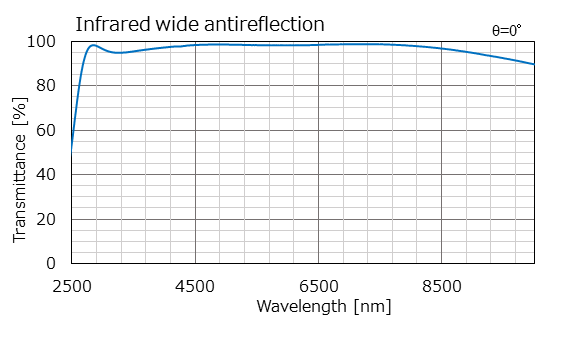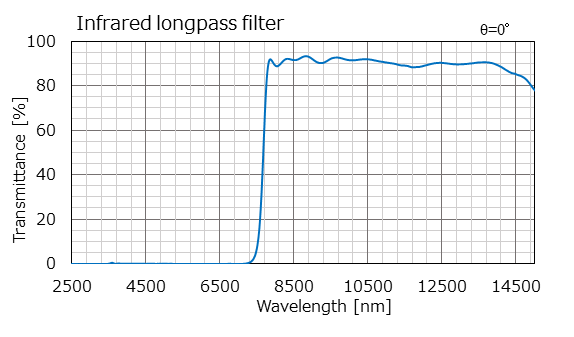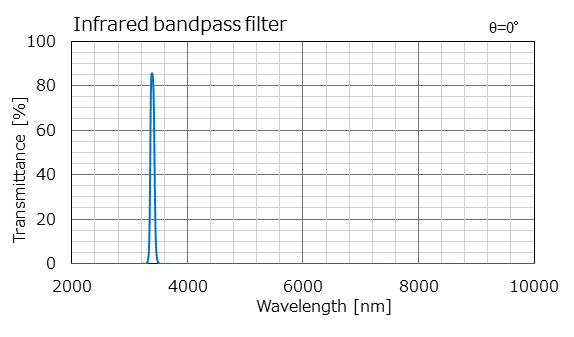Feature
An infrared filter is a filter that transmits the infrared region.
The infrared region is broadly divided into three regions: the near infrared region (NIR) of the roughly 0.7 to 2.5 μm band, the mid-infrared region (MIR) of the 2.5 to 25 μm band, and the far infrared region (FIR) of the 25 to 1,000 μm band.
Infrared rays are used in a very wide range of applications, from crime prevention to astronomical observation and sensors.
In the mid-infrared region in particular, we have transparent substrate materials with a high refractive index and can produce multi-layer interference filters with various characteristics as we can obtain a wider range of cutoff characteristics than in the visible region using spectral absorption.
High refractive index substrate materials include quartz, sapphire, Si, Ge, chalcogenide, etc., and the material to be used can be selected in consideration of the required spectral characteristics and durability.
In addition, we can not only produce filters that allow light to pass through, but also mirrors that reflect the above areas.
Applications
Various gas analysis (CO2, CO, HC, NOx, SOx, O3 gas, etc.), surface measurement, radiation thermometer (thermography and temperature sensors), diffraction grating high-order cut filters, human sensors, other optical systems and cameras using infrared rays, etc.
Example characteristics
These are the general spectral characteristics of anti-reflection coating, edge filters (LPF) and interference filters (BPF) in the mid-infrared region.
This is an example of a filter that achieves high transmittance in the above area.


